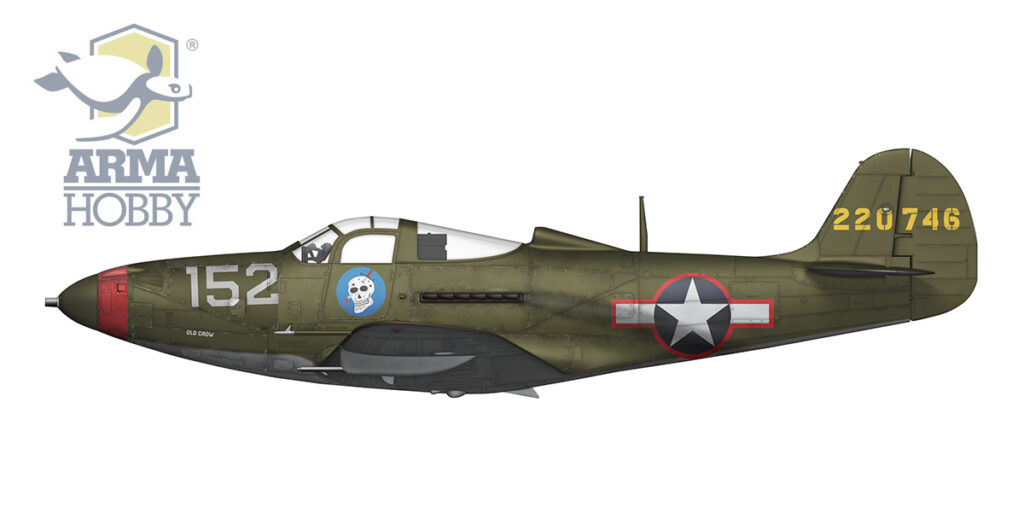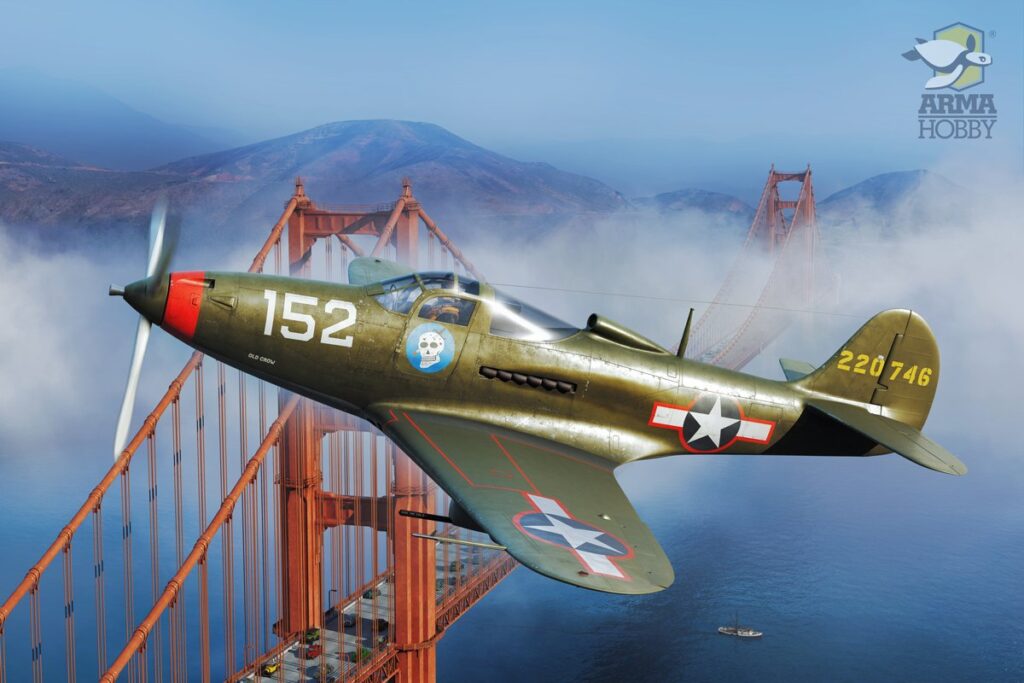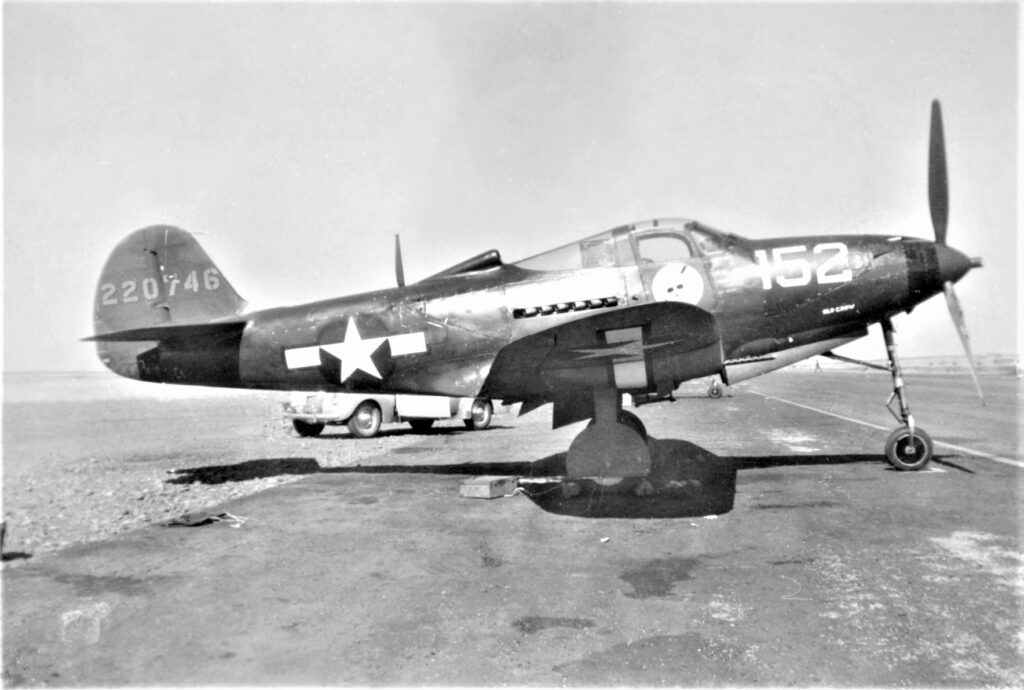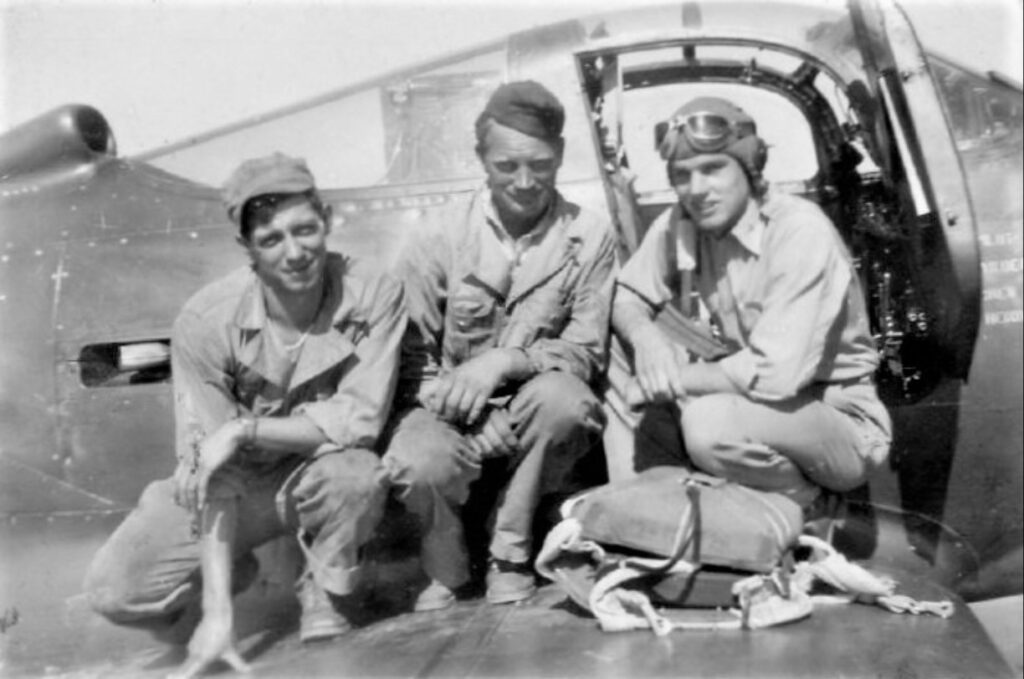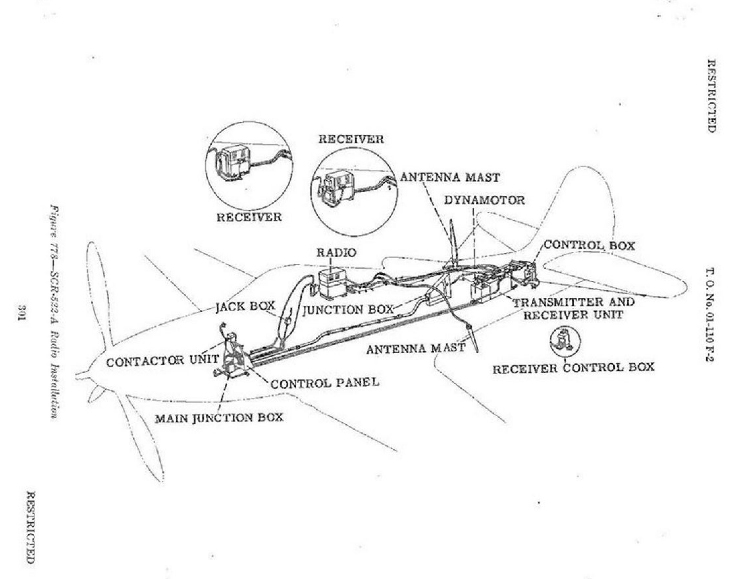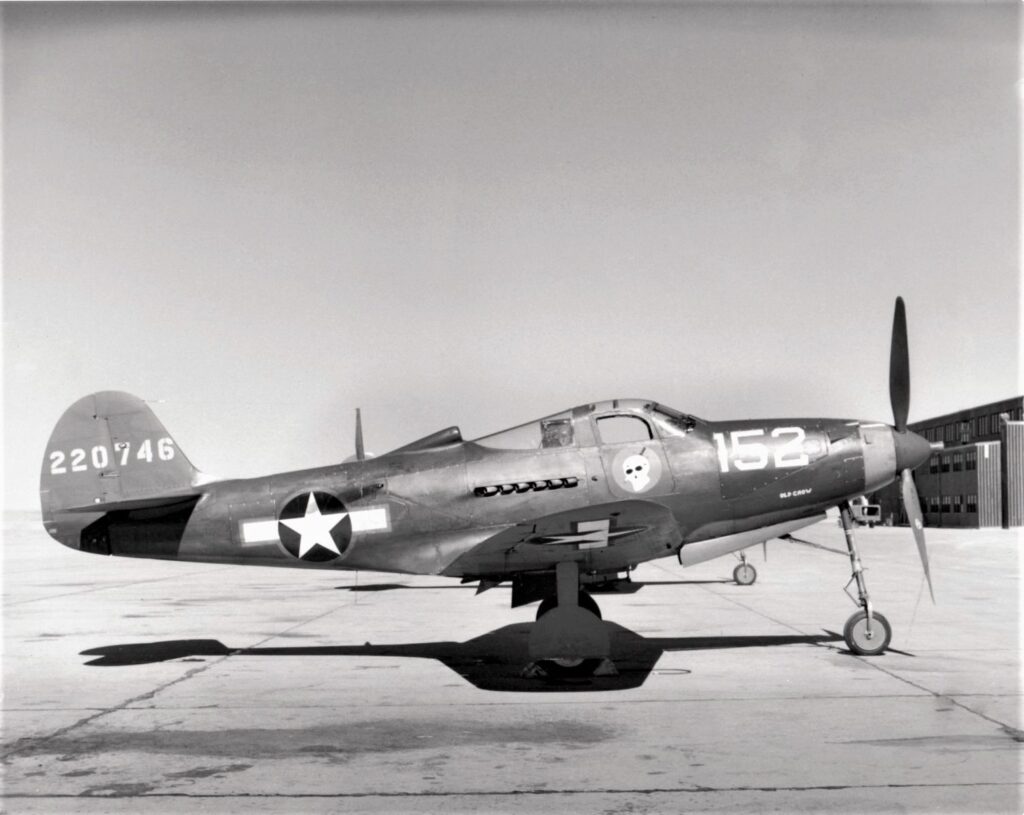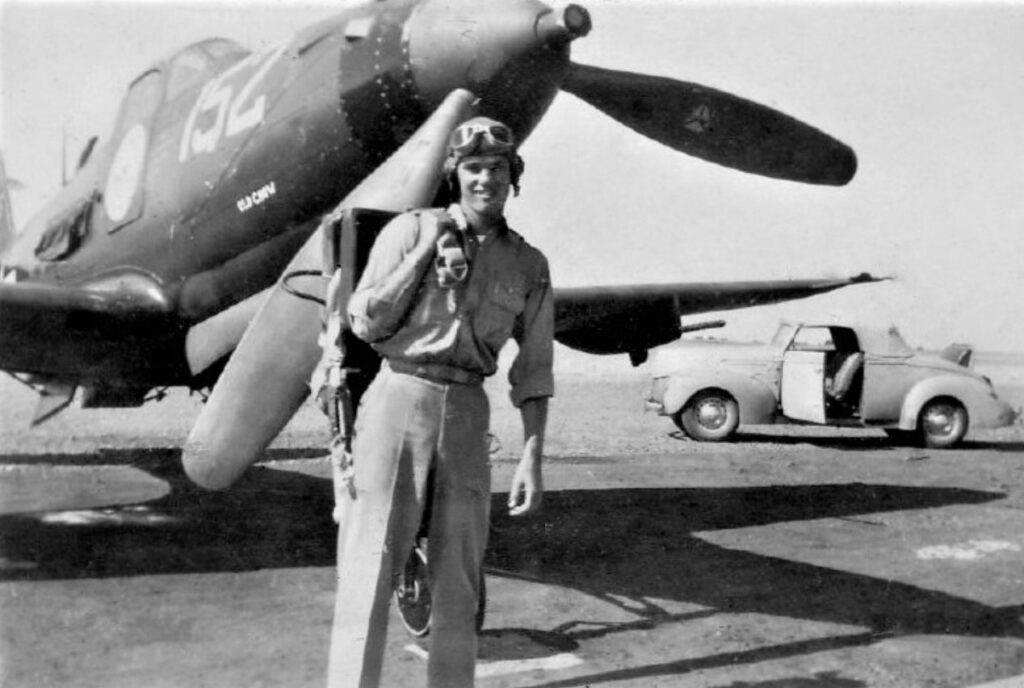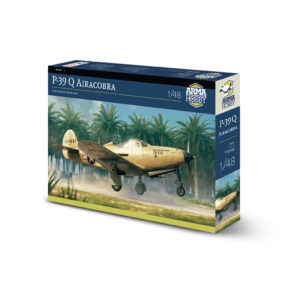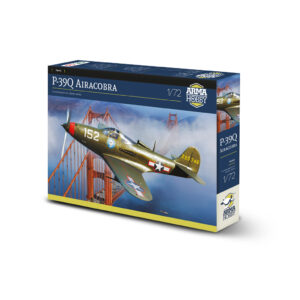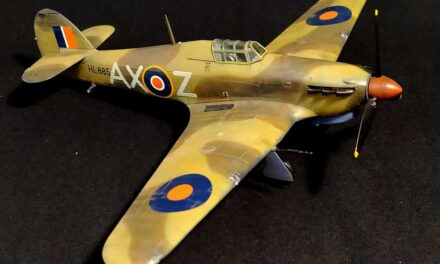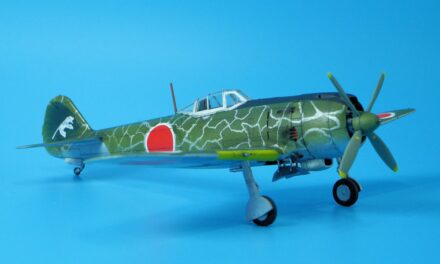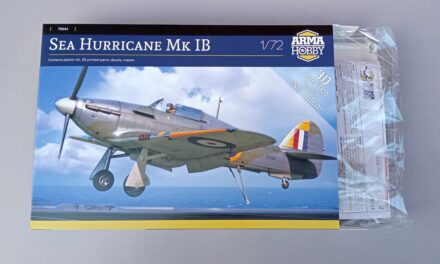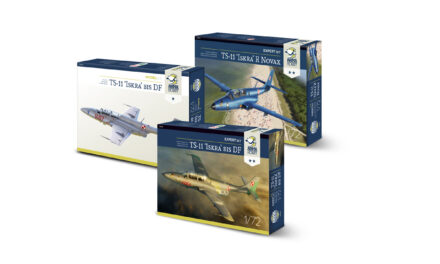Arma Hobby’s P-39Q Airacobra models, available in both 1/72 and 1/48 scales, include decals for the aircraft used by the future American triple ace Clarence “Bud” Anderson during his training. Before starting work on the model, let’s take a closer look at the photos of this aircraft to better understand its appearance.
357th Fighter Group
The 357th Fighter Group, which included the 363rd Fighter Squadron where Bud served, was formed in December 1942 in Hamilton, California. In March, the Group moved to Tonopah, Arizona, for fighter combat and bombing training, receiving P-39D aircraft. Upon returning to California on June 3, 1943, the 363rd and 364th Squadrons relocated to Santa Rosa. A month later, the 363rd moved to Oroville. In October, the 363rd Squadron moved to Casper, Wyoming, departing for the European front without aircraft on November 8.
P-39D Airacobra from 363 Squadron over Tonopah.
California was a significant training centre for the USAAF and USN/USMC aviation then. The 357th Group’s aircraft considered operational and waiting overseas deployment also served in air defence and anti-invasion roles, occasionally encountering US Navy Wildcats in the air. The Group experienced several fatal accidents during flights or ground operations. The proximity to San Francisco attracted young pilots with the city’s nightlife, and the Golden Gate Bridge was a frequent destination for training flights.
P-39 Q-10 Airacobra over the Golden Gate, Bay of San Francisco, Summer-Autumn 1943, artwork by Piotr Forkasiewicz.
P-39Q Airacobra Serial Number 42-20746
In June 1943, Bud Anderson began flying the aircraft with serial number 42-20746 in Santa Rosa. This aircraft featured the standard USAAF camouflage used until late 1943. The upper surfaces were factory-painted Olive Drab 41, and the lower surfaces were Neutral Grey 43. The serial number on the tail was in Insignia Yellow. The first digit was typically omitted, which was always a four during this period. The first two digits indicated the fiscal year when the government purchased the aircraft.
The aircraft bore markings typical of the summer of 1943, with stars with white bars and a red outline.
Airacobra nr. 42-20740, 363 Squadron, Summer 1943.
Unit Markings
It was common to paint a band in the Squadron’s assigned colour behind the propeller spinner in aviation units. For the 363rd Squadron, this colour was red. Depending on the camera filters used, this band appears very light or dark in photos. In every black-and-white image, the nose’s shade matches the national markings’ border. The red with a white border is also visible on the nose wheel rims of Bud’s aircraft and at least one other aircraft from the unit in Oroville. The main wheel rims were standard aluminium colour.
Clarence Bud Anderson at the doors of his Airacobra.
The unit insignia, a skull on a blue background, was painted on the cockpit doors on both sides of the aircraft. Some interpretations depict the background colour as yellow (as in the Osprey book), but this does not hold up when compared to the colours on pilots’ jacket patches.
Bud with chief Otto Heino and assist. crew chief Walker at Airacobra.
Individual Features of the Aircraft
The aircraft’s sides of the nose had a white tactical number 152 painted on them, with the pilot’s choice of name, “Old Crow” (a Kentucky bourbon brand), below it.
The lower part of the front landing gear strut shows aluminium-coloured chips, likely due to wear from airfield handling. The aircraft, despite intensive service was well-maintained, with clean, semi-gloss camouflage surfaces and moderate weathering. Exceptions included soot and oil leaks from a vent on the right side and metallic wear on screws and dzus fittings. The ammunition compartment cover panel with the tactical number and the fuselage spine behind the cockpit had a noticeably darker, shinier Olive Drab, possibly from another aircraft or cleaned or repainted.
Airacobra in Oroville, Summer 1943, nose band, nose wheel rim and national insignia outline is the same shade.
Another photo with poersonnel: Walker, Otto i Bud.
Typical features of late P-39 versions included the SCR-522-A radio receiver on a panel behind the cockpit, with two accompanying antennas: a mast behind the cockpit and a rod antenna underneath, which modellers should add using wire. Enthusiastic modellers might add a small silver “jack box” on the bulkhead behind the pilot’s seat on the right side.
SCR-522-A radion installation from late P-39 K-L-M-N-Q Airacobra (P-39 Erection and Maintenenace…)
Two Airacobra shots from Caspar, October-November 1943. Again nose band, nose wheel rim and national insignia outline are the same colour.
Underwing armaments, in the form of .50 cal machine gun pods, are visible in photos taken in Oroville (with the National Star bar extending onto the pod). In pictures from Casper, it is clear that personnel removed the pods. There is no information about bombing training with this aircraft. Bud may have used a fuel tank for the ferry flight to Casper, but no evidence supports this.
Convertible in the Background
Photos from Oroville show a small, light-coloured convertible parked in the background. Bud Anderson purchased a 1939 Ford Deluxe Convertible before joining the Air Force in 1941. The cream-coloured car accompanied him to various bases where the 363rd Squadron was stationed. While Bud was on gunnery training at Foster Field, Texas, the vehicle was stolen from the base in Santa Rosa by William O’Brien and taken on a trip to San Francisco. During a very intoxicated return, the car hit an island with a trolley stop. The police towed the damaged car. Culprits recovered and repaired the vehicle so well that Bud would only have noticed if Ed Horo had told him.
Photos: Clarence Bud Anderson via Jim Roeder
Sopecial thanks to: Jim Roeder
Sources:
- To Fly and Fight: Memoirs of a Triple by Clarence E. Anderson (Author), Joseph P. Hamelin (Collaborator), 2018 https://toflyandfight.com/
- 357th Fighter Group by James Roeder, Squadron Signal, Carrolton 2001
- Bell P-39 Erection and Maintenance, 1 December 1942
- P-39 Airacobra Aces of World War 2, by John Stanaway and George Mellinger, Illustrated by Jim Laurier, Osprey 2001
See also:
- P-39 Airacobra kits Bud’s Anderson “Old Crow” markings 1/48 and 1/72 scale in Arma Hobby webstore.
- Do not miss P-39Q deal packages in 1/48!
Modeller happy enough to work in his hobby. Seems to be a quiet Aspie but you were warned. Enjoys talking about modelling, conspiracy theories, Grand Duchy of Lithuania and internet marketing. Co-founder of Arma Hobby. Builds and paints figurines, aeroplane and armour kits, mostly Polish subject and naval aviation.
This post is also available in:
 polski
polski


